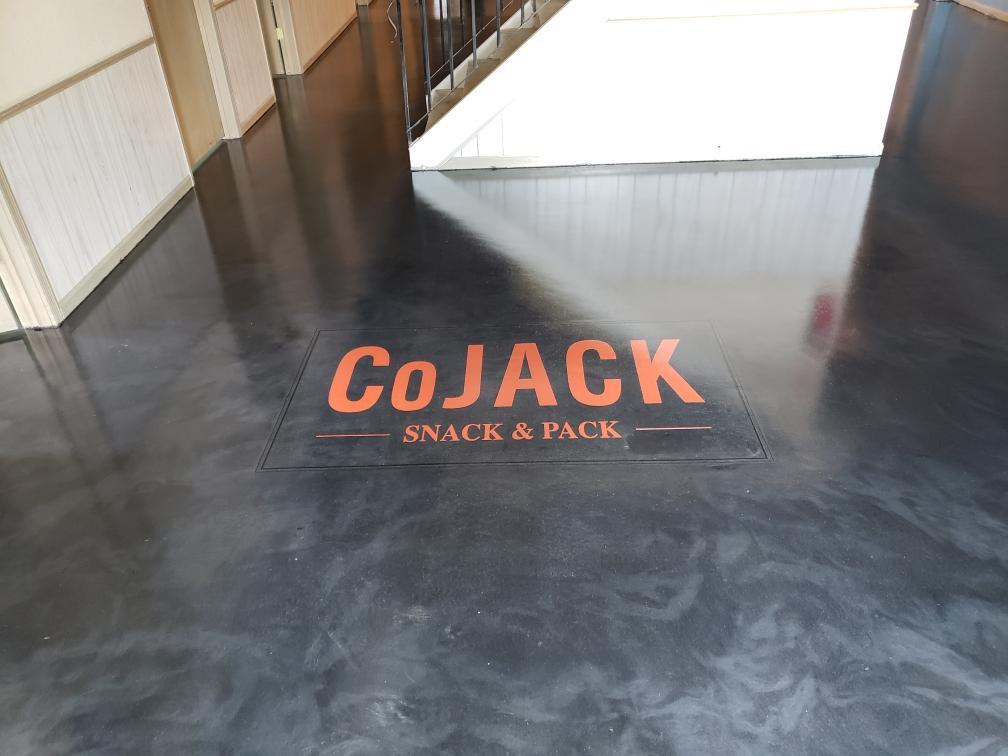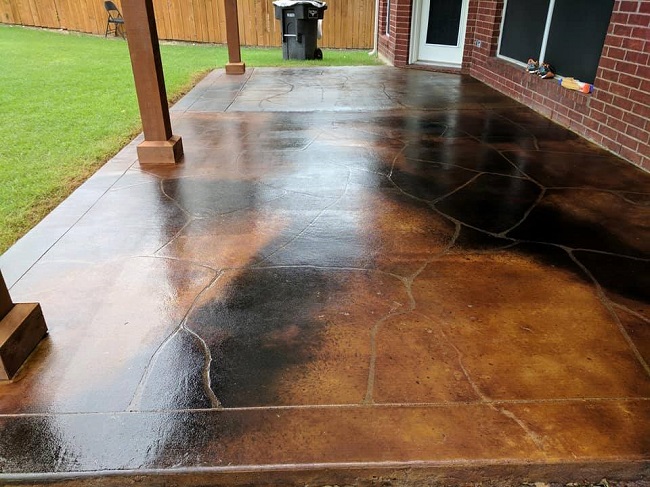Stained Concrete Fundamentals Explained
Table of ContentsA Biased View of Decorative ConcreteThe 6-Second Trick For Polished ConcreteFascination About Stamped Concrete
Stamped concrete in numerous patterns, highlighted with acid stain Attractive concrete is the use of concrete as not just a practical tool for construction however as a visual enhancement to a structure, while still offering its function as an integral part of the structure itself such as floors, wall surfaces, driveways, and outdoor patios.

The installation contains pushing molds right into the concrete while the concrete is still in its plastic state. Color is accomplished by utilizing dry shakes, shade hardeners, powder or liquid releases, indispensable shades, or acid stains. All these products might be incorporated to create even much more detailed layouts. Stamped concrete might be made use of on driveways, outdoor patios, industrial roads and car park as well as also interior floors.
There are numerous re-coloring options which can totally bring back as well as invigorate the color and also discussion of discolored stamped concrete. Concrete dyes take several forms and compositions and also can be made use of on both property and also industrial concrete applications, including sound/retaining walls, bridges, counter tops, floors, and so on. Early concrete dyes included generic printing inks that were dissolved in mild solutions of alcohol as well as put on concrete surface areas to add a large variety of color to simple gray concrete.



Some Known Details About Epoxy Garage Flooring
The concrete surface area is later rubbed to remove excess stain as well as reduced the effects of by a basic service of ammonia and water or sodium bicarbonate (much less most likely to cause whiting later on) to help raise the ph level back to normal level. Due to disparities in the surface area degree of concrete flooring, acid discoloration develops a variegated or multicolor look that is special per slab.
Older outside concrete surfaces might not color as well as interior surfaces due to the fact that the setting has actually seeped or percolated out the mineral material. As well, any kind of exposed aggregate (rocks) in used concrete will not accept staining. Chemicals typically used in acid staining consist of hydrochloric acid, iron chloride, her explanation and also salt bicarbonate. Stained Concrete.
The primary difference is that acid discolorations react to the concrete as well as change the physical make up of the concrete material, whereas water based discolorations are more of a "finish" that bonds with the concrete. There are many variants of water based spots that have actually entered the ornamental concrete market that perform in a number of various ways.
Concrete overlays day to the 1960s when chemical engineers from a few of the larger, well known chemical business started to explore acrylic paint materials as modifiers for cement and also sand mixes. The outcome was a slim cementitious covering material that would abide by concrete surface areas and also supply a newly resurfaced coating to recover the worn surface area - Epoxy Garage Flooring.
Acrylic resins supplied excellent UV resistance, however did not have lengthy term water resistance as well as attachment attributes needed to provide a lengthy term and also irreversible remedy. Building of a polymer cement overlay to change asphalt sidewalk to block appearance and shade to create decorative crosswalk as well as website traffic relaxing in high-pedestrian area. Polymer concrete overlays, being composed of a proprietary mix of Rose city seals, different accumulations as well as polymer materials, were introduced over twenty years earlier.
Unlike traditional cement and also concrete mixes, polymer concrete overlays can be used very finely or heavily without fear of delamination or regular product failure. Furthermore, polymer cement overlays are a lot more resistant to harm from salt, petrochemicals, UV, extreme weather and traffic wearing. Epoxy Garage Flooring. Initially planned browse around here for use as a slim surface restoration product for concrete substrates, polymer cement overlays were presented into the building concrete and industrial flooring markets in the early 80s.
The Main Principles Of Polished Concrete
Polymer concrete overlays are considered cost-effective in providing long-term, sturdy renovation without the requirement for expensive and constant repair services connected with weakening concrete surface areas. Polymer cement overlays are made use of for exterior and interior applications ranging from: Skim coat/broom surface concrete resurfacing Recover and secure damaged, pitted, flaking as well as tarnished concrete back to the appearance of a new concrete surface area.

Existing substrate redecorating as well as renovating Change Austin Residential Stained Concrete Are Well Priced the appearance of existing concrete or wood substrates through using "thin stamped" or "thin tarnished" overlays, producing new textures, colors as well as designs. For use on commercial or resident swimming pool deck, this regularly takes the form of "splatter textures" or "knockdowns," in which polymer cement is put on the existing concrete substrate in a reasonably textured surface (standard of 1/8" density) in various patterns.
